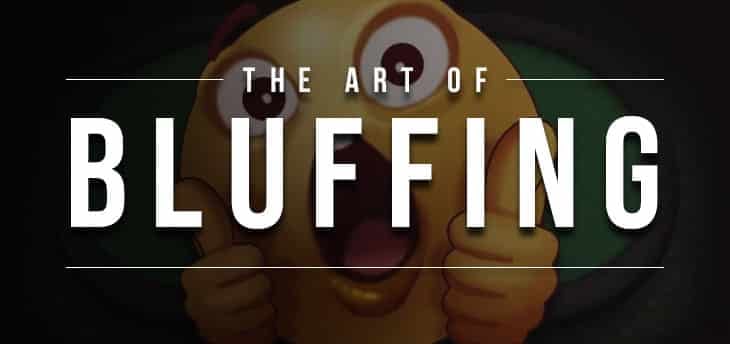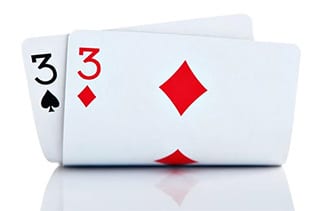The Art of River Bluffing in No-Limit Hold’em

In the thrilling arena of No-Limit Hold’em, the river stage can either elevate dreams to glorious heights or dash them upon the rocks of defeat. This moment serves as the climactic conclusion to a meticulously crafted drama, casting you—the player—as either the triumphant victor or the vanquished foe. Yet, there’s no cause for alarm, as we embark on an exploration into the nuanced craft of river bluffing. Mastering this technique can transform you into the leading hero of your very own poker epic.

The Psychological Battleground
River bluffing is less about the cards in your hand and more about the story you’ve been telling from the moment betting begins. It’s psychological warfare, where your objective is to convince your opponents of a narrative so compelling that they fold their potentially winning hands. But how do you craft such a narrative?
Each betting round contributes to this overall narrative, with strategic decisions made during the flop, turn, and river shaping the story you tell.
First, understand the texture of the board. A board that’s seen a progression of potential flush or straight-completing cards, offers a ripe narrative for a bluff. Your betting pattern should suggest you’ve been chasing a draw and have now completed it. Conversely, a paired board might scare off opponents fearing a full house, giving you another storyline to potentially exploit.

Selecting Your Targets
Not all opponents are created equal. Some are as readable as a children’s book, while others possess the inscrutability of a mystery novel. Understanding the behavior of other players is crucial to identifying the right targets for your bluffs:
- The Tight Players: They fold more often than a laundry service. Show them enough pressure, and they’ll back down unless they have it.
- The Heroes: They are always trying to catch bluffs. Against them, your narrative needs to be watertight. They will look for inconsistencies in your story.
Remember, bluffing against multiple players is akin to juggling lit torches—it’s possible, but why risk getting burned?
![]()
The Art of Bet Sizing in Betting Rounds
Bet sizing is your pen and ink in the story of bluffing. Too little, and your bluff is as believable as a poorly crafted lie. Too much, and you risk too high for too little return. The golden rule? Your bet should mimic the size you’d make with the hand you’re pretending to have. If the pot’s narrative suggests a flush, your bet should scream, “I have a flush!” not whisper it. In Texas Holdem Poker, the ‘all in’ strategy represents the ultimate form of aggressive betting, where a player bets all of their remaining chips in a single round, showcasing a bold and high-risk move.
Timing is Everything in the Final Betting Round
The best bluffs are those that seem inevitable, a natural continuation of the tale you’ve been weaving. An abrupt, out-of-character bet on the river raises alarms. Your betting pattern should have a rhythm, a flow that culminates in the river bluff. It’s the crescendo in your symphony, not a discordant note. The final betting round is crucial, as it can be the culmination of a well-timed bluff, influencing the outcome of the hand based on calculated risks.
Advanced Techniques in Online Poker
- The Check-Raise Bluff: A move that says, “I lured you into a trap.” By checking, you feign weakness, baiting your opponent into betting. Then, you pounce with a raise. It’s a bold move that can win you the pot but be warned as it cost you dearly.
- The Overbet Bluff: Risky yet rewarding, this involves betting more than the pot’s size. It’s a psychological ploy, suggesting you’re either holding a monster hand or nothing at all. Use it sparingly, for its power lies in its unpredictability.

Practical Examples of a Winning Hand
In the intricate dance of no-limit hold’em, consider a scenario where the board hints at a possible straight with four consecutive cards, yet the river fails to complete it. Here, you’ve been the picture of confidence, betting as if on the brink of a straight. Upon the river’s arrival, you push a significant bet across the line, your actions screaming confidence. This forces your opponent, who may have been nursing a set, into a corner, leading them to fold under the pressure of what they perceive as a completed straight, granting you the pot on the strength of your narrative alone.
Another compelling example unfolds when the river card introduces a second ace to the board, against a backdrop of your previous passive play. Seizing the moment, you place a bold bet, painting a picture of having slow-played aces, suggesting a powerful set or full house. Your opponent, facing the sudden shift in your approach and the implied strength of your hand, finds themselves in a dilemma. The risk of confronting what appears to be a formidable hand forces them to fold, awarding you the pot with nothing but air and a well-timed bluff, showcasing the profound psychological depth and strategic manoeuvring that river bluffing entails.
Conclusion
The river is where legends are born, but remember, bluffing is an art, not a science. It requires practice, intuition, and an unwavering poker face. But most importantly, it demands respect for the game and its players. Use your newfound knowledge responsibly, weaving narratives that compel you, but always be prepared to fold your own story if the risk outweighs the reward.
In mastering river bluffing, you’re not just playing cards; you’re playing minds. And in the grand theatre of No-Limit Hold’em, that’s where the most thrilling dramas unfold. So, step onto the stage with confidence, armed with these advanced techniques, and remember—the next time you bluff, you’re not lying; you’re telling a story so convincing that even you might start to believe it.
